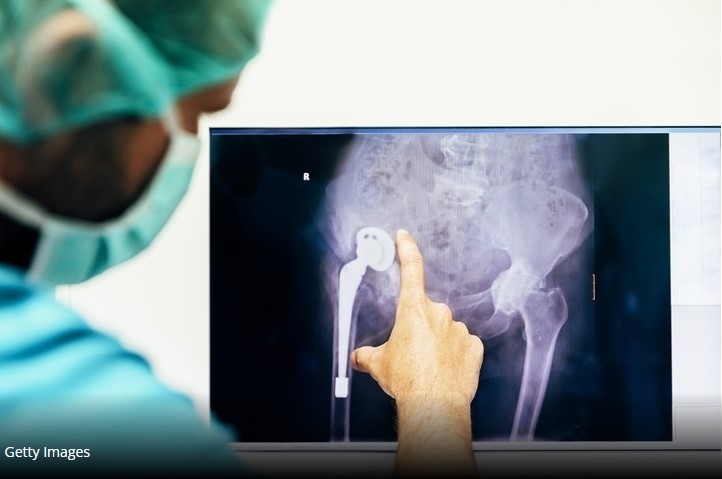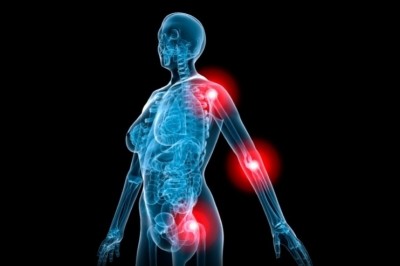Vitamin D does not lower fracture risk in adults, study finds

The team found vitamin D3 did not lower fracture risk versus placebo among healthy midlife and older adults who were not vitamin D deficient, or had low bone mass, or osteoporosis.
“Overall, the results from this large clinical trial do not support the use of vitamin D supplements to reduce fractures in generally healthy U.S. men and women,” concludes lead author Meryl LeBoff, Chief of the Calcium and Bone Section in the Endocrine Division at the Brigham and Women’s Hospital.
“These findings do not apply to adults with vitamin D deficiency or low bone mass or osteoporosis.
Most participants in the trial were not deficient and may have already reached the vitamin D level needed for bone health.”
Vitamin D supplements are widely recommended for bone health in the general population, but data on whether they prevent fractures have been inconsistent.
To address this, researchers conducted an ancillary study to the VITamin D and OmegA-3 TriaL (VITAL), a clinical trial of more than 25,000 adults, also led by Brigham.
Study findings
A total of 1,991 incident fractures in 1,551 participants were confirmed over a median follow-up of 5.3 years.
Compared to placebo, supplemental vitamin D3 (2000 IU/day) did not reduce total, non-vertebral, or hip fractures.
The analyses also showed that there were no effects of supplemental vitamin D3 on major osteoporotic fractures, wrist fractures, or pelvic fractures.
Effects were not modified by baseline age, sex, race, body mass index, baseline vitamin D blood levels, and personal use of supplemental calcium and/or vitamin D.
“Although VITAL was originally designed to look at cardiovascular and cancer outcomes, this is a wonderful example of how it has shed light on health outcomes far beyond its original goals,” says JoAnn Manson, co-author, and Chief of the Division of Preventive Medicine at the Brigham.
Previous work
Results from randomised, controlled trials investigating the effects of supplemental vitamin D on fracture outcomes have been inconsistent, with trials finding evidence for benefit, no effect, or harm.
Differences to explain the divergent results across these trials include the use of bolus dosing, coadministration of vitamin D with calcium, and small sample sizes.
No large randomised, controlled trials have tested the effects of daily supplemental vitamin D alone (without coadministered calcium) in preventing fractures in the U.S. population.
Systematic reviews and meta-analyses of randomised, controlled trials have raised questions about whether supplemental vitamin D has beneficial effects for prevention of fractures.
The Institute of Medicine (IOM) identified an increased risk of fractures at both low and high 25-hydroxyvitamin D levels and emphasised the need for more research from large randomised, controlled trials.
Discussing the findings
Discussing the findings, the team highlight suggestions that the effects of supplemental vitamin D3 might be limited to those with low 25-hydroxyvitamin D levels.
Higher prevalence of vitamin D deficiency have been reported among Black adults, the obese, postmenopausal women, older men, and older persons with hip fractures.
“Our results did not suggest any differences in the effects of supplemental vitamin D3 on fracture outcomes according to race or ethnic group, BMI, or age,” the team writes.
Although most participants in our cohort may have already reached the 25-hydroxyvitamin D level needed for bone health, VITAL was large enough to stratify participants according to baseline 25-hydroxyvitamin D levels.
The team found no significant differences in fracture incidence between trial groups according to various 25-hydroxyvitamin D thresholds.
“Our ongoing studies are focusing on whether free vitamin D levels or genetic variation in vitamin D absorption, metabolism, or receptor function will provide information about individuals who may benefit from supplemental vitamin D on musculoskeletal health,” adds Dr LeBoff.
Source: New England Journal of Medicine
Published online: DOI10.1056/NEJMoa2202106
“Supplemental Vitamin D and Incident Fractures in Midlife and Older Adults.”
Authors: Meryl LeBoff et al.















